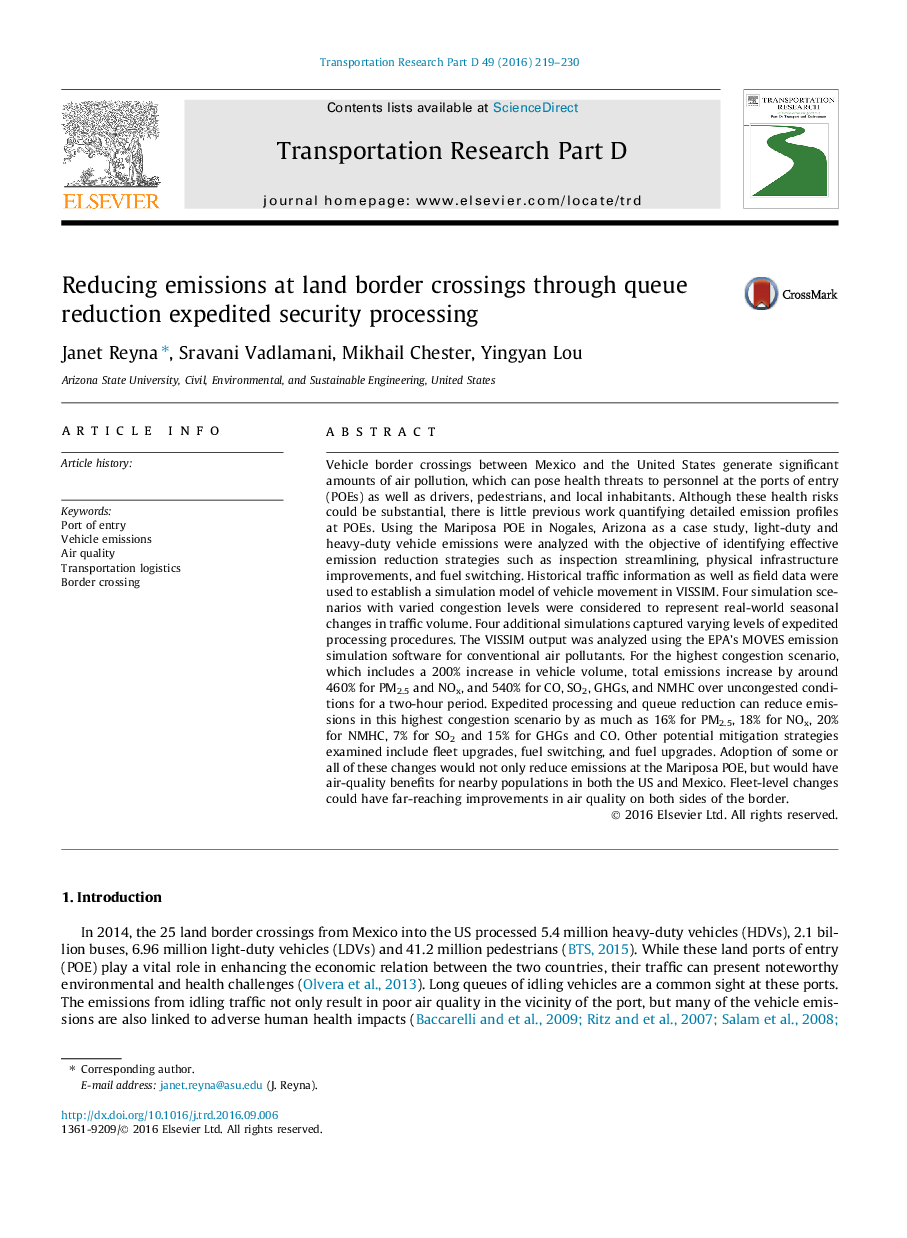| کد مقاله | کد نشریه | سال انتشار | مقاله انگلیسی | نسخه تمام متن |
|---|---|---|---|---|
| 7499389 | 1485874 | 2016 | 12 صفحه PDF | دانلود رایگان |
عنوان انگلیسی مقاله ISI
Reducing emissions at land border crossings through queue reduction and expedited security processing
ترجمه فارسی عنوان
کاهش انتشار گازهای گلخانه ای در مرزهای مرزی از طریق کاهش صف و پردازش امنیتی سریع
دانلود مقاله + سفارش ترجمه
دانلود مقاله ISI انگلیسی
رایگان برای ایرانیان
کلمات کلیدی
بندر ورودی، انتشار خودرو، کیفیت هوا، تدارکات حمل و نقل، گذرگاه مرزی،
موضوعات مرتبط
علوم زیستی و بیوفناوری
علوم محیط زیست
علوم زیست محیطی (عمومی)
چکیده انگلیسی
Vehicle border crossings between Mexico and the United States generate significant amounts of air pollution, which can pose health threats to personnel at the ports of entry (POEs) as well as drivers, pedestrians, and local inhabitants. Although these health risks could be substantial, there is little previous work quantifying detailed emission profiles at POEs. Using the Mariposa POE in Nogales, Arizona as a case study, light-duty and heavy-duty vehicle emissions were analyzed with the objective of identifying effective emission reduction strategies such as inspection streamlining, physical infrastructure improvements, and fuel switching. Historical traffic information as well as field data were used to establish a simulation model of vehicle movement in VISSIM. Four simulation scenarios with varied congestion levels were considered to represent real-world seasonal changes in traffic volume. Four additional simulations captured varying levels of expedited processing procedures. The VISSIM output was analyzed using the EPA's MOVES emission simulation software for conventional air pollutants. For the highest congestion scenario, which includes a 200% increase in vehicle volume, total emissions increase by around 460% for PM2.5 and NOx, and 540% for CO, SO2, GHGs, and NMHC over uncongested conditions for a two-hour period. Expedited processing and queue reduction can reduce emissions in this highest congestion scenario by as much as 16% for PM2.5, 18% for NOx, 20% for NMHC, 7% for SO2 and 15% for GHGs and CO. Other potential mitigation strategies examined include fleet upgrades, fuel switching, and fuel upgrades. Adoption of some or all of these changes would not only reduce emissions at the Mariposa POE, but would have air-quality benefits for nearby populations in both the US and Mexico. Fleet-level changes could have far-reaching improvements in air quality on both sides of the border.
ناشر
Database: Elsevier - ScienceDirect (ساینس دایرکت)
Journal: Transportation Research Part D: Transport and Environment - Volume 49, December 2016, Pages 219-230
Journal: Transportation Research Part D: Transport and Environment - Volume 49, December 2016, Pages 219-230
نویسندگان
Janet Reyna, Sravani Vadlamani, Mikhail Chester, Yingyan Lou,
